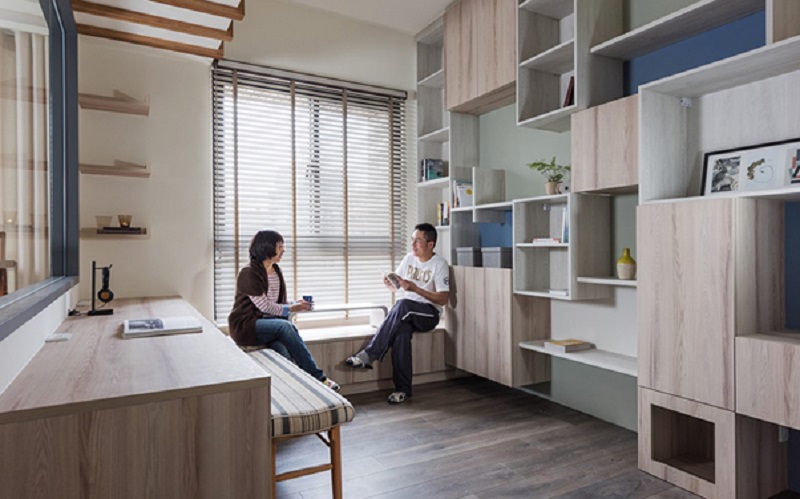
Transforming a space through renovation isn’t just about new furniture or fresh paint. For homeowners navigating a home renovation in Singapore, understanding what truly elevates a space can make the difference between average and exceptional. The right approach to interior design renovation focuses on subtle changes, practical choices, and long-term adaptability. These aren’t flashy gimmicks, but grounded design decisions professionals swear by. Here are the most overlooked strategies for refining residential interior design while keeping cost, function, and future use in mind.
1. Prioritise Space Planning Before Any Design Starts
Jumping into materials and colours without defining how a room should function leads to wasteful decisions. Instead, map out movement, daily use patterns, and potential obstructions. In compact flats, particularly HDBs, clever zoning and space-saving layouts can improve flow dramatically. Treat space planning as the foundation of all interior design renovation work.
2. Shift Storage Into Design Features
Rather than hiding storage in corners or adding bulky cabinets post-construction, integrate it into your design language. Full-height carpentry, recessed shelves, and raised platforms offer seamless storage while keeping the room’s proportions intact. In residential interior design, good storage isn’t just about keeping clutter out of sight but about making it part of the aesthetic.
3. Stick to a Consistent Visual Language
One underutilised secret? Simplicity in material and colour. Many homeowners try to express their personality through a wide range of textures and tones. This tends to backfire in smaller Singapore homes. A more consistent palette across flooring, walls, and carpentry maintains visual continuity, making spaces feel bigger and more polished without overdesigning.
4. Don’t Overlook Ceiling Design
Ceilings are often treated as blank canvases, but they’re an opportunity to guide the eye, frame zones, or conceal services. Subtle false ceiling drops can create depth and hide unsightly wiring or ductwork. This is particularly helpful in interior design renovation projects where aesthetics must align with practicality.
5. Use Lighting to Define Mood and Function
Lighting shouldn’t be an afterthought. It sets the tone, divides spaces, and highlights focal points. Rather than relying on a single overhead source, layer ambient, task, and accent lighting. Cove lights for warmth, under-cabinet strips in kitchens, or track lighting for flexibility are subtle tools designers use to elevate interiors quietly and effectively.
6. Build in Adaptability for Changing Needs
An often-overlooked tip in home renovation in Singapore is future-proofing. Families grow, lifestyles shift, and needs evolve. Modular furniture, sliding partitions, and rooms with dual purposes (like a guest-study hybrid) can prevent costly reworks in a few years. Versatility baked into your renovation pays off in the long run.
7. Invest in Fewer, Better Quality Fixtures
In an effort to stretch budgets, it’s tempting to opt for more fittings and features at a lower cost. The smarter route? Focus on high-use items: quality kitchen hardware, durable flooring, and good bathroom accessories. These endure the wear and tear of daily life and reflect well-thought-through residential interior design that lasts.
8. Embrace Vertical Surfaces
Walls can do far more than hold artwork. Built-in desks, pegboards, and slim shelving offer functionality without compromising floor space. In tight layouts, vertical design becomes crucial. Especially in home renovation in Singapore, vertical space can offset limitations in floor area, turning potential dead zones into working solutions.
9. Keep Renovation Timelines Realistic
While timelines may not be the most glamorous part of a renovation, managing them smartly is key to avoiding extra costs and rushed decisions. Unexpected delays, supply chain issues, permit wait times, can derail progress. Build in buffers and work closely with your contractor to adjust phases if needed, especially when renovating occupied units.
10. Coordinate Colour with Natural Light
Natural light changes throughout the day. A paint shade that looks warm at noon may feel cold by evening. Observe how sunlight enters each room before committing to colour palettes. This is a lesser-known strategy used in interior design renovation to create cohesion and ensure comfort across different lighting conditions.
11. Mind the Gaps in Contractor Communication
Even the best ideas fall flat if the team executing them lacks clarity. Gaps in understanding between designers, builders, and homeowners lead to mismatched outcomes. Always document detailed instructions, material finishes, and layout drawings. Regular check-ins during the process reduce surprises and maintain consistency in residential interior design execution.
12. Don’t Renovate Without a Master Plan
Impulse upgrades during renovation like adding a feature wall or shifting a light point, can unravel the original plan and inflate budgets. Avoid this by finalising a comprehensive design blueprint from the start. Stick to it unless absolutely necessary. This discipline is what separates well-managed renovations from chaotic ones.
Trying to handle every detail of a renovation alone can be overwhelming, especially when balancing style, function, and budget. The key is thoughtful planning, careful coordination, and guidance from experienced professionals who understand the demands of home renovation in Singapore.
Contact Interea to explore tailored solutions for interior design renovation that align with your space, timeline, and lifestyle.